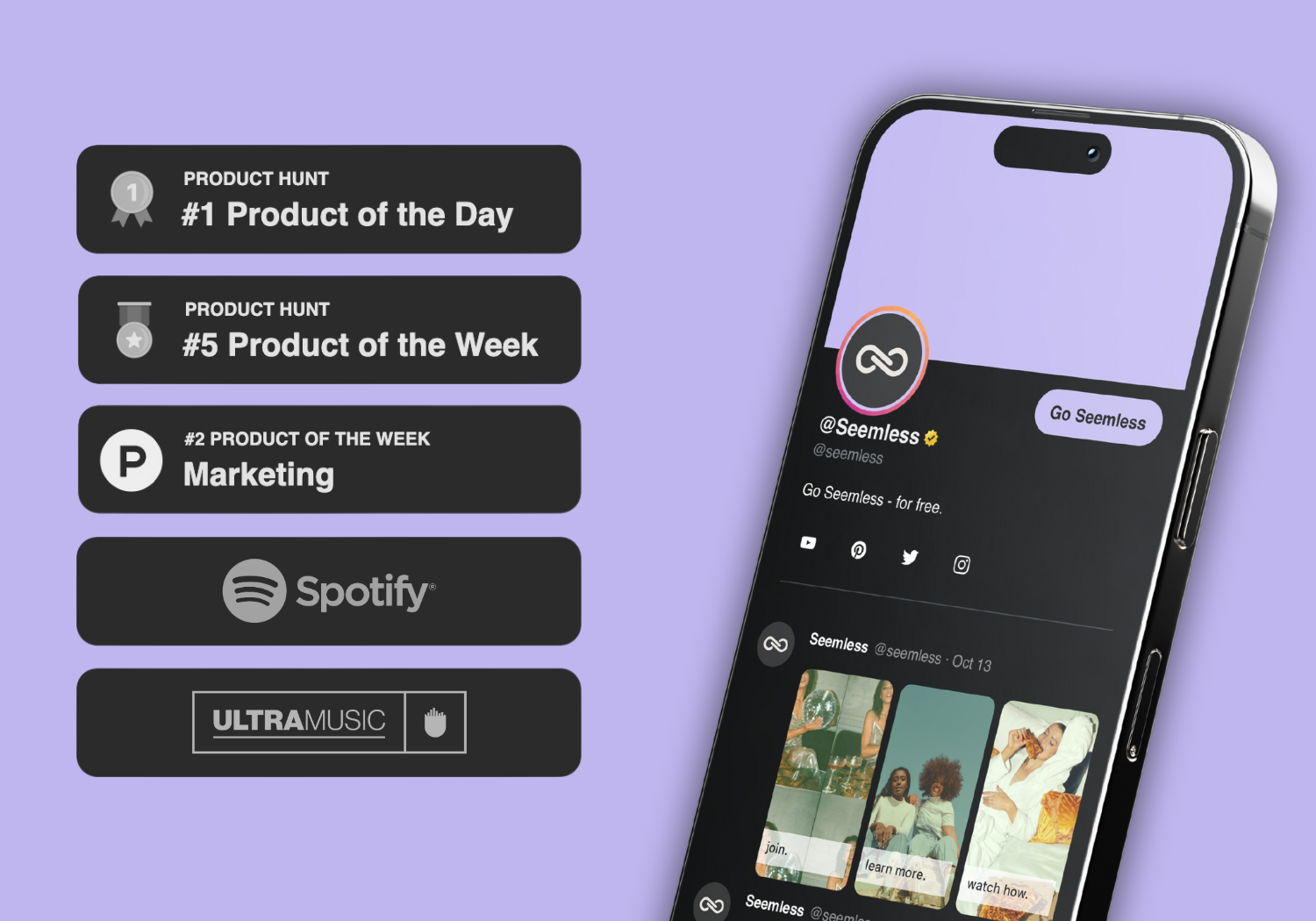In the era of social media marketing, the “link in bio” has become an essential tool for businesses and individuals to direct traffic to their websites, products, and services. Two popular options for optimizing this tool are Linktree and landing pages. Linktree is a web-based platform that enables users to create a single landing page containing multiple links, which can be shared on social media profiles.
Landing pages, conversely, are standalone web pages designed for specific marketing campaigns or promotions. Linktree has gained popularity due to its simplicity and user-friendly interface. It allows users to create a single page with multiple links, facilitating easy access to various content or products from a single URL for followers.
Landing pages, on the other hand, are tailored for specific marketing campaigns and offer more extensive customization options to target a particular goal or audience. Both Linktree and landing pages offer unique sets of features for customization, analytics, and user experience, making them valuable tools for driving traffic and increasing conversions. The choice between the two depends on the specific needs and goals of the user or business.
Linktree Customization Options
Linktree provides users with a simple interface to add and arrange links, change background and button colors, and upload a profile picture or logo. While it offers a limited set of customization options, it is perfect for users who want a quick and easy way to organize their links and maintain a consistent brand image.
Landing Page Customization Capabilities
On the other hand, landing pages offer a higher level of customization, allowing users to create a unique design, add multimedia content, and integrate forms for lead generation. This level of customization is ideal for businesses and marketers who want to create a tailored experience for their audience and track specific metrics for their campaigns.
Advanced Features of Landing Pages
Additionally, landing pages can be optimized for mobile responsiveness and SEO, providing a more comprehensive solution for driving conversions.
Analytics and insights are crucial for understanding the performance of your “link in bio” tool and optimizing it for better results. Linktree provides basic analytics such as click-through rates and top-performing links, giving users a general idea of their audience’s behavior. While this is helpful for understanding which links are popular, it lacks the depth of insights needed for more advanced marketing strategies.
On the other hand, landing pages offer more robust analytics tools that provide detailed insights into user behavior, conversion rates, and traffic sources. This level of data is essential for understanding the effectiveness of marketing campaigns, A/B testing different designs and content, and optimizing for better results. Additionally, landing pages can be integrated with third-party analytics tools such as Google Analytics, providing even more comprehensive data for informed decision-making.
Integrations and compatibility are important factors to consider when choosing a “link in bio” tool. Linktree offers integrations with popular social media platforms such as Instagram, TikTok, and Twitter, making it easy to share your Linktree URL across different channels. It also integrates with popular marketing tools such as Mailchimp and Facebook Pixel, allowing users to track conversions and build email lists.
On the other hand, landing pages can be integrated with a wider range of third-party tools and platforms, including email marketing software, CRM systems, and e-commerce platforms. This level of compatibility is essential for businesses that want to streamline their marketing efforts and track conversions across different channels. Additionally, landing pages can be optimized for SEO and integrated with Google Tag Manager for advanced tracking and analytics.
User experience and navigation play a crucial role in the effectiveness of your “link in bio” tool. Linktree offers a simple and intuitive interface that allows users to easily navigate through the links and access the content they are interested in. It provides a seamless experience for followers who want to explore different products or content from a single page.
On the other hand, landing pages can be designed with a specific user journey in mind, guiding visitors towards a specific call-to-action or conversion goal. This level of control over the user experience is essential for businesses that want to create a seamless and persuasive journey for their audience. Additionally, landing pages can be optimized for fast loading times and mobile responsiveness, ensuring a smooth experience across different devices.
Landing pages have a significant advantage over Linktree when it comes to SEO and marketing benefits.
Optimization for Search Engines
Landing pages can be optimized for specific keywords, meta tags, and content that cater to search engine algorithms, making them more discoverable by potential customers. This level of optimization is crucial for businesses that want to drive organic traffic to their website or promote specific products or services.
Lead Generation and Engagement
Additionally, landing pages provide more opportunities for lead generation through integrated forms and CTAs, allowing businesses to capture valuable customer information and build their email lists. This level of engagement is essential for nurturing leads and driving conversions over time.
Limitations of Linktree
While Linktree offers basic SEO features such as custom meta titles and descriptions, it lacks the depth of optimization needed for advanced marketing strategies.
Key Takeaways
- Linktree and landing pages are both tools used for organizing and displaying multiple links in one place, commonly used in social media bios.
- Linktree offers limited customization options, while landing pages provide more flexibility in design and branding.
- Linktree provides basic analytics on link clicks, while landing pages offer more in-depth insights and tracking capabilities.
- Linktree integrates with popular social media platforms, while landing pages can be more versatile in terms of integrations and compatibility with other tools.
- User experience and navigation on landing pages can be more seamless and engaging compared to Linktree’s simple layout.
Conclusion and Recommendations for Link in Bio Tool Usage
In conclusion, both Linktree and landing pages offer valuable features for optimizing your “link in bio” tool on social media platforms. Linktree is ideal for individuals and small businesses who want a quick and easy way to organize multiple links in one place, while landing pages are better suited for businesses that want to create tailored experiences for specific marketing campaigns or promotions. For those looking for simplicity and ease of use, Linktree is a great option with its intuitive interface and basic customization options.
However, businesses that want more control over their user experience, analytics insights, and SEO optimization should consider using landing pages for their “link in bio” tool. By leveraging the unique features of each option, businesses can create a comprehensive strategy for driving traffic, capturing leads, and driving conversions through their social media profiles.
If you’re interested in learning more about Linktree and its alternatives, you may want to check out this article on Linktree vs. Bitly. It provides a detailed comparison of the two platforms and their free features, helping you make an informed decision about which one is right for you.
FAQs

What is Linktree?
Linktree is a tool that allows users to create a single landing page with multiple links to their social media profiles, websites, and other online content. It is commonly used in social media profiles to share multiple links in one place.
What is a Landing Page?
A landing page is a standalone web page created specifically for a marketing or advertising campaign. It is where a visitor “lands” after clicking on a link in an email, advertisement, or similar places.
What are the free features of Linktree?
Linktree’s free features include the ability to add an unlimited number of links, basic customization options, and access to basic analytics to track link clicks and visits.
What are the free features of a Landing Page?
A free landing page can be created using platforms like WordPress, Wix, or Squarespace. These platforms offer basic customization options, the ability to add multimedia content, and some level of analytics to track visitor behavior.
How do Linktree and Landing Page differ in terms of customization?
Linktree offers basic customization options such as choosing a theme, adding a profile image, and rearranging the order of links. On the other hand, landing pages created using platforms like WordPress, Wix, or Squarespace offer more advanced customization options including the ability to fully customize the design and layout.
Which one is better for tracking analytics, Linktree or Landing Page?
Both Linktree and Landing Pages offer basic analytics for tracking link clicks and visits. However, landing pages created using platforms like WordPress, Wix, or Squarespace may offer more advanced analytics options and integrations with third-party tools for tracking visitor behavior.
Can Linktree and Landing Page be used together?
Yes, Linktree and Landing Pages can be used together. For example, a user can use Linktree to showcase their social media profiles and a landing page to promote a specific product or service.

